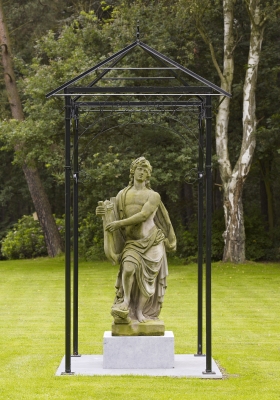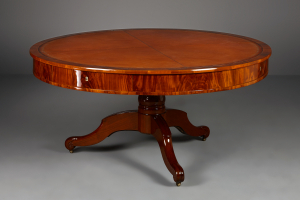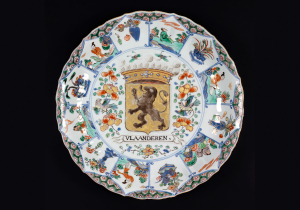Dutch Garden Sculpture representing Apollo Musagetes
Dutch Garden Sculpture representing Apollo Musagetes
Apollo Musagetes, here depicted in a classic contrapposto, was the embodiment of male beauty and, attributed with lyre and laurel wreath, patron of poetry and music. The left engaged leg firmly on the ground, the relaxed leg resting on a rock. On his right arm the lyre that he is playing with his left hand. His head donned with a wreath and clad in a robe that reveals his objectification of masculine pulchritude.
Apollo Musagetes is one of the appearances of Apollo. In this character he resides on Mount Parnassus with the muses, dedicated to poetry and music. In iconographical tradition the lyre appears from about 650 BCE onwards as an attribute to Apollo and in sculpture from the 4th century CE onwards Apollo is depicted as the standard of male beauty: a slender virile young man. The Greek sculptor Praxiteles depicted Apollo in his different appearances, among which Apollo Musagetes. Although he was not depicted in medieval times in the Christian world, Apollo was one of the few classic deities that did not suffer from negative allegories: he embodied beauty, composedness, proportion, and harmony thus opposing him to evil and injustice. From the Italian Renaissance onwards, he is once again depicted in all his appearances; as Phoibos Apollo the sungod, as Apollo Medicus, and as Apollo Musagetes. At tradition that continues firmly into Baroque.
The formal gardens and parks of the baroque era were the paragon of proportion and harmony and the association with the fine arts made a statue of Apollo Musagetes a perfect auxiliary to emphasize the beauty of its surroundings.
- Provenance
- Private collection, Belgium
- Period
- ca. 1700
- Material
- Bentheimer Sandstone
- Dimensions
- 200 x 94 x 61 cm
Global shipping available









